Picture a group of children, eyes closed, sitting cross-legged on colorful mats. Their little faces are peaceful, their breathing slow and steady. But this isn’t preschool naptime—it’s an occupational therapy session incorporating yoga, where movement and play support developmental growth.
Yoga for children isn’t just about cute poses named after animals. When combined with Occupational Therapy, it becomes a powerful tool for supporting kids’ physical, mental, and emotional development. This blog explores why yoga becomes a valuable tool in a pediatric occupational therapist’s toolkit.
The Perfect Pair:
Yoga and Occupational Therapy
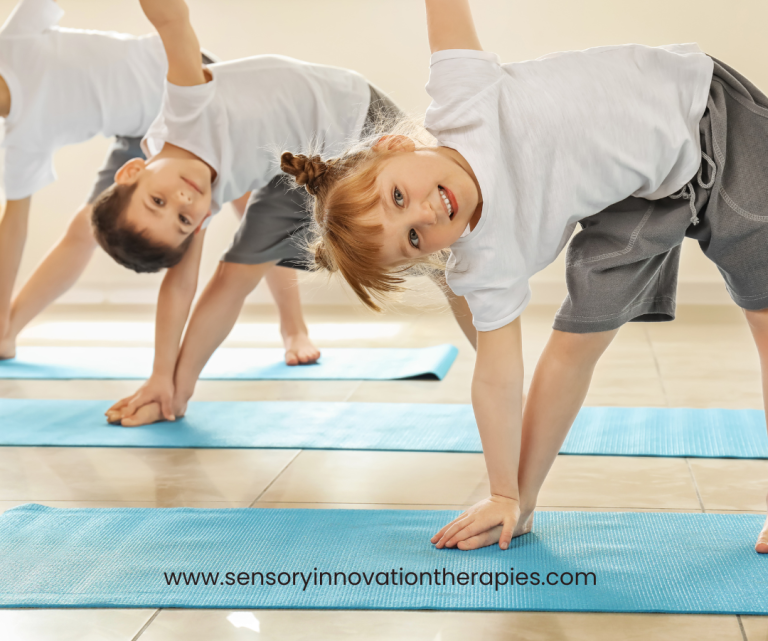
What is Occupational Therapy?
Occupational therapy (OT) helps people of all ages participate in the activities that are important to them. For kids, these “occupations” include playing, learning, and socializing. OT can help children who struggle with motor skills, self-help skills, sensory processing, or self-regulation.
How Does Yoga Fit In?
Yoga naturally aligns with many Occupational Therapy goals. It promotes:
- Body awareness
- Balance and coordination
- Strength and flexibility
- Focus and concentration
- Emotional regulation
By viewing yoga through an Occupational Therapist’s lens, sessions can be created that are not just fun, but truly beneficial for children’s development.
Yoga Poses
Animal Poses for Motor Skills
Many yoga poses are named after animals, which makes them instantly appealing to kids. But these poses are not just cute—they’re also highly functional:
- Cat-Cow Pose: Improves spinal flexibility and core strength

- Downward Dog: Builds upper body strength and hamstring flexibility

- Frog Pose: Enhances hip mobility and leg strength

- Warrior Pose: Builds strength in legs and core, promotes stability

- Cobra Pose: Enhances spinal flexibility and strengthens back for good posture
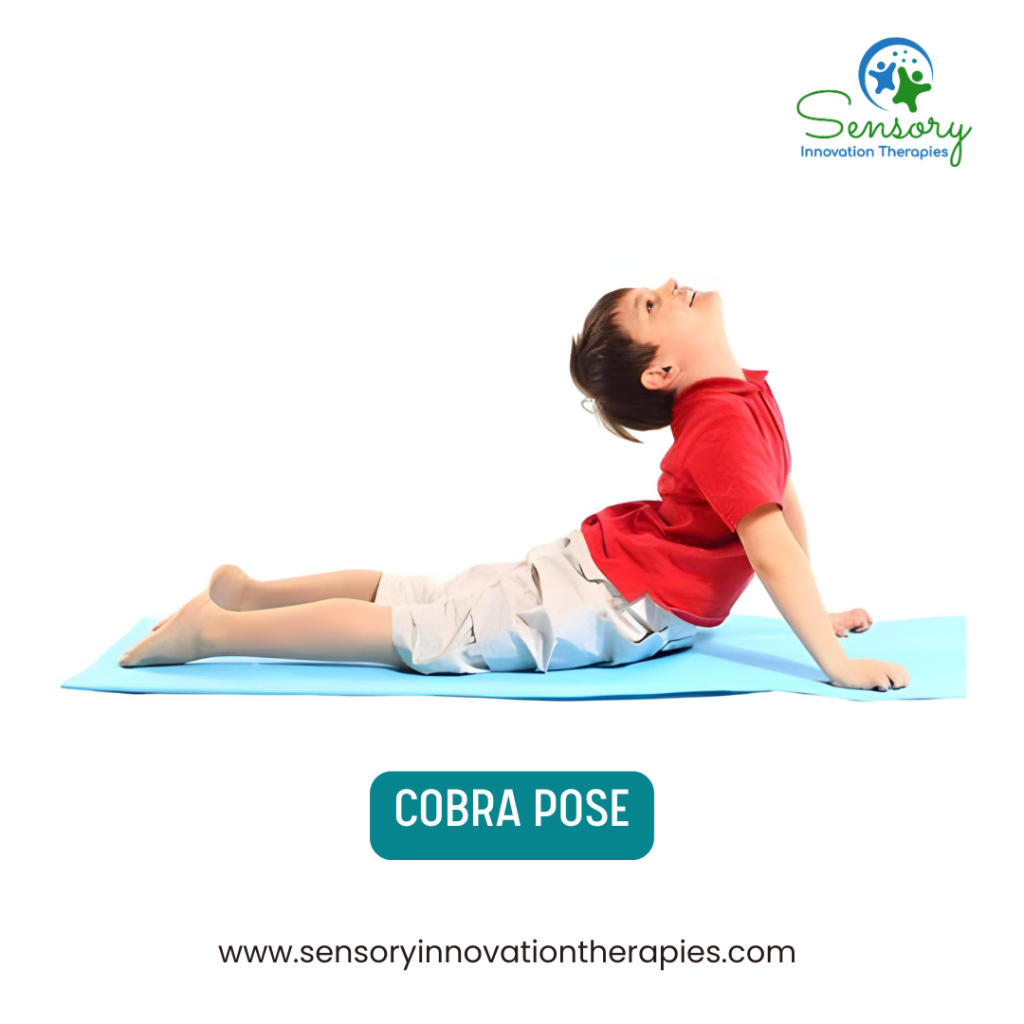
Balancing Poses for Vestibular System
Balance poses are great for the vestibular system, which is crucial for spatial awareness and coordination:
- Tree Pose: Challenges single-leg balance and focus
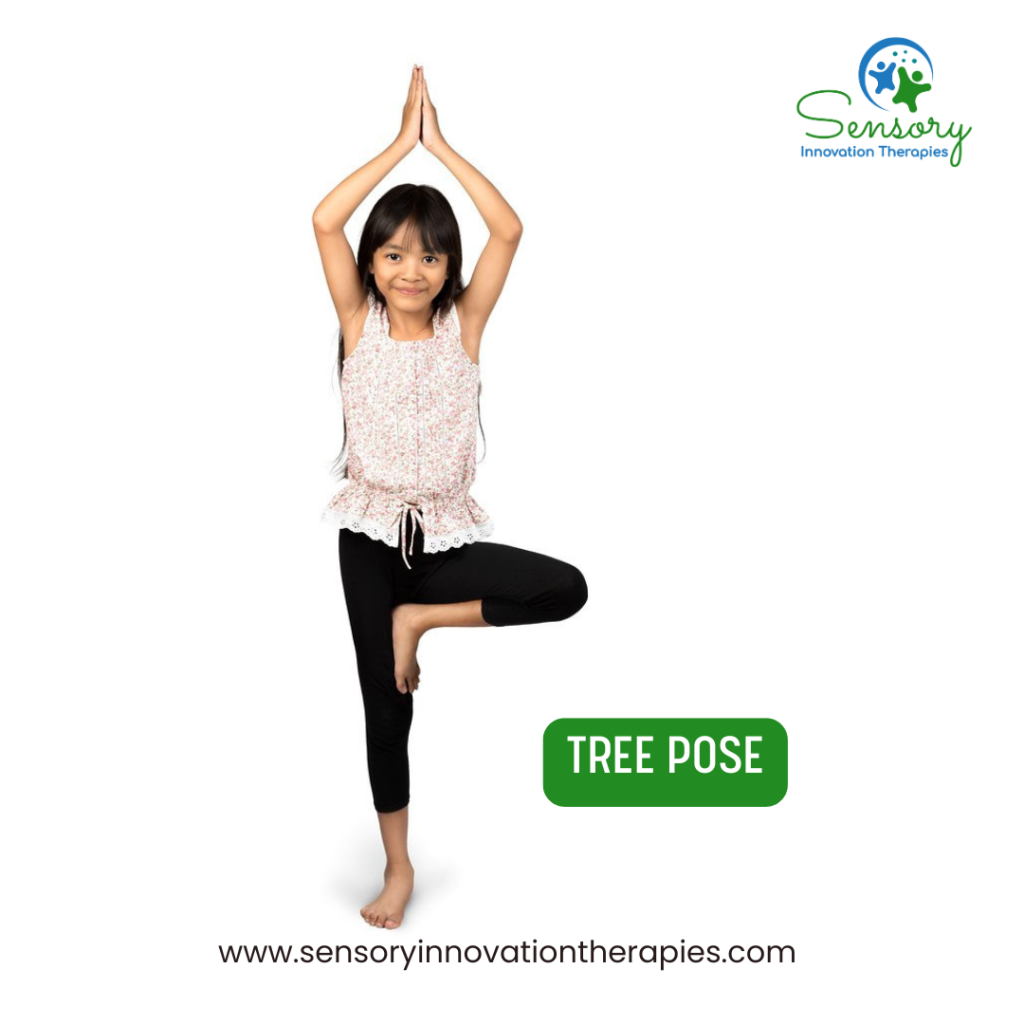
- Airplane Pose: Improves core strength and proprioception
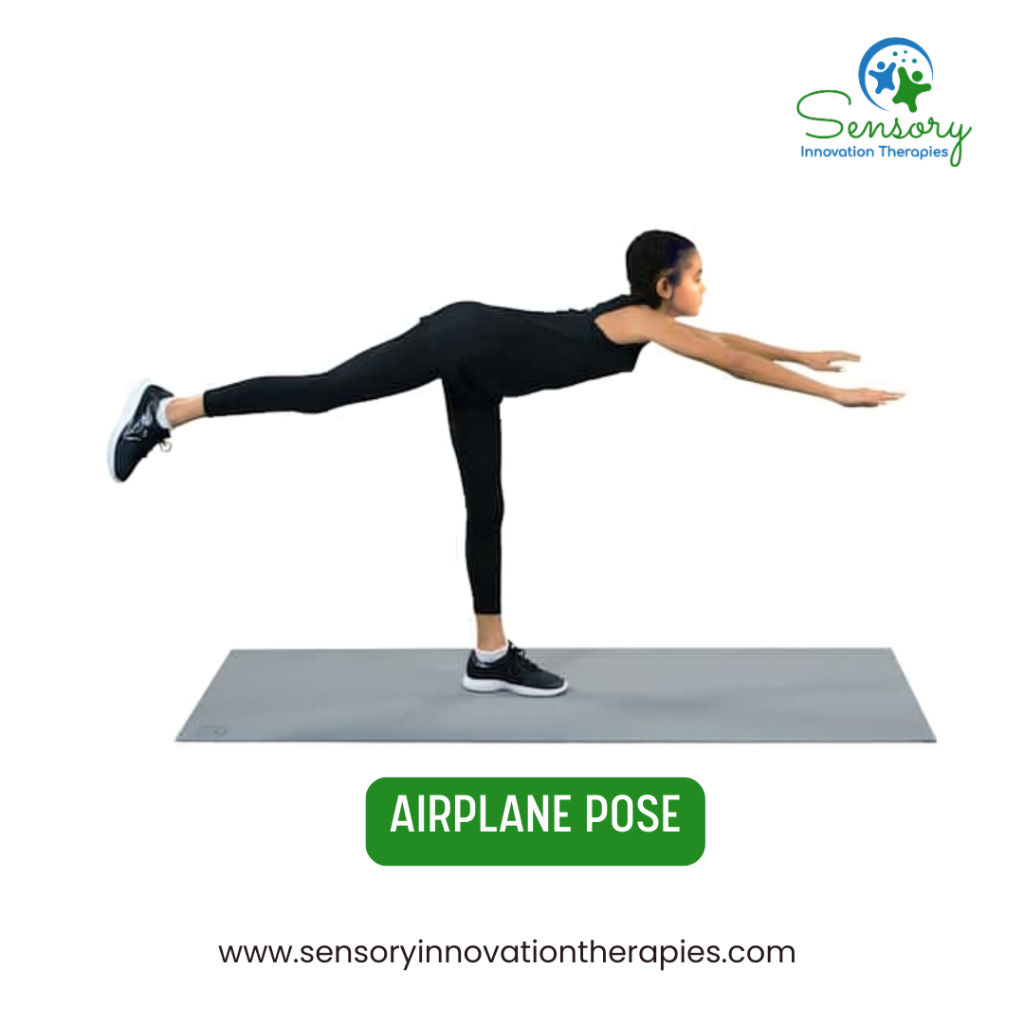
Breathing Exercises for Self-Regulation
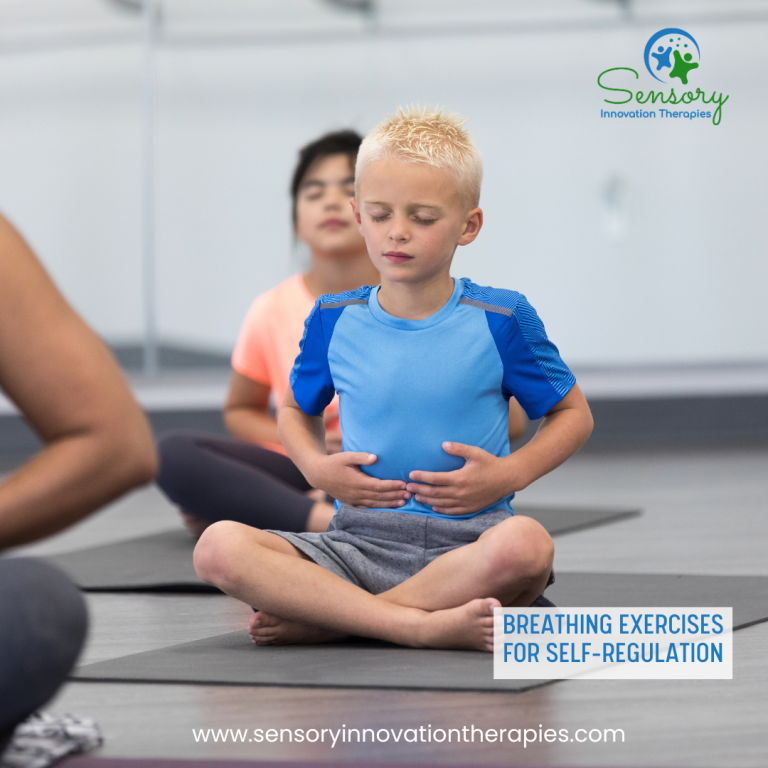
Simple breathing techniques can be powerful tools for emotional regulation:
- Belly Breathing: Teaches kids to use their diaphragm for deep, calming breaths
- Bee Breath: A fun, buzzing exhale that can help release tension
- Balloon Breathing: Encourages deep diaphragmatic breathing for self-regulation
Sensory-Friendly Yoga

Creating a Calming Environment
- Use soft lighting or natural light
- Keep background noise to a minimum
- Offer weighted blankets for relaxation poses
- Provide fidget toys for transitions between poses
Make yoga a full sensory experience:
- Use scented lotions for deep pressure massages
- Play soft background music or nature sounds
- Offer textured yoga mats or balance cushions
Adapting Yoga for Different Needs
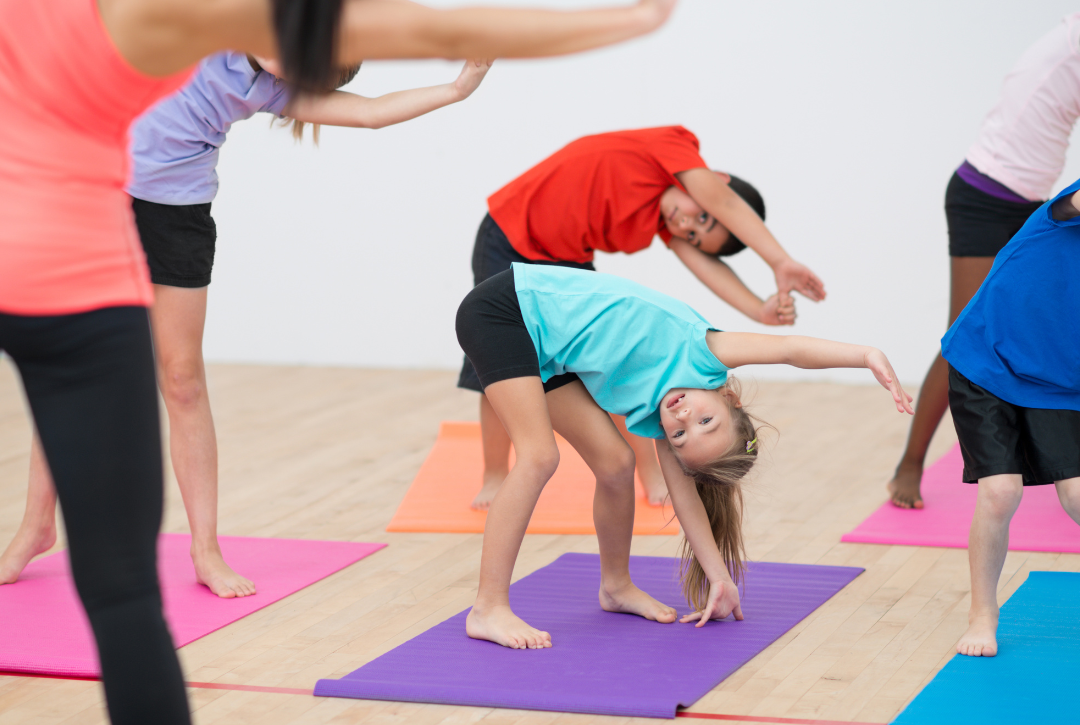
Occupational therapists tailor yoga practices to suit each child’s specific needs and abilities. This might involve:
- Modifying poses for children with physical limitations
- Using equipments like blocks or straps for support
- Incorporating visual aids for children who need prompts and cues
- Providing step-by-step demonstration of poses
Fun and Engaging Yoga Activities
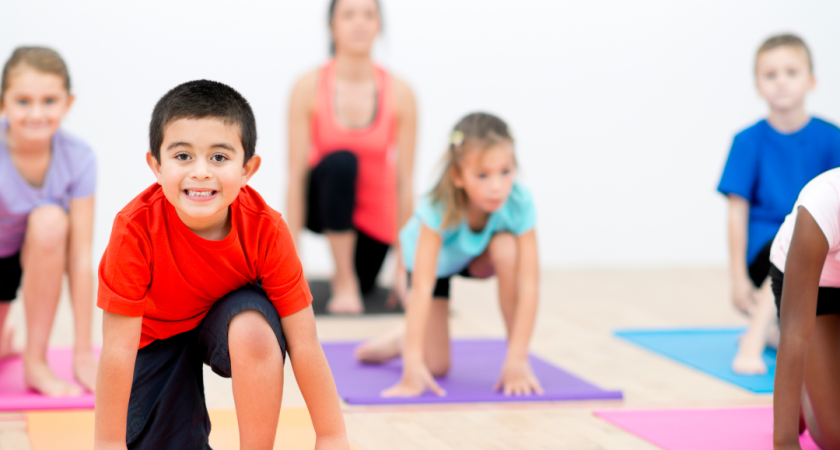
To keep children interested and motivated, therapists often use:
- Animal-themed poses (like “cat-cow” or “downward dog”)
- Storytelling yoga, where poses follow a narrative
- Yoga games that incorporate movement and mindfulness
Integrating Yoga with Other OT Techniques
Yoga can be combined with other therapeutic approaches, such as:
- Sensory integration activities
- Fine motor skill exercises
- Social skills development (Group Sessions)
Yoga, when viewed through the lens of occupational therapy, offers a unique and powerful way to support children’s development. It’s not about perfecting poses or achieving zen-like stillness (although that can be a nice bonus). Instead, it’s about giving kids a means to understand and regulate their bodies and minds, setting them up for success in all areas of life.
Whether you’re a parent, teacher, or therapist, consider incorporating yoga into your activities with children. The benefits extend far beyond the yoga mat, potentially impacting a child’s physical abilities, emotional regulation, and overall well-being. Remember, every child is unique, so feel free to adapt these ideas to best suit the needs of the children in your life.
Namaste!
